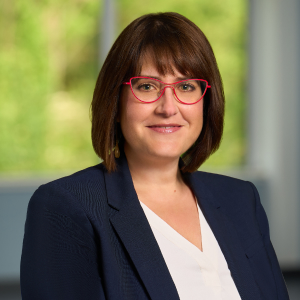In this time of a viral pandemic, it is still important to keep a focus on rare diseases. The last day of February is Rare Disease Day, the biggest day of the year for the rare disease community. Since 2009, the National Institutes of Health (NIH) Clinical Center and National Center for Advancing Translational Sciences (NCATS) have hosted Rare Disease Day at the NIH as part of the global observance to focus the world’s attention on this important subject.
The energy and passion to work together was apparent among the researchers, physicians, regulators, and most importantly, patient advocates. The day was an opportunity to collaborate, learn from one another, and celebrate the work already accomplished. Most importantly, this day enables us to reinvigorate our passion to advance treatments for rare disease patients and reminds us that the patient is the central point of our work.
Dr. Christopher Austin, Director of NCATS, began the day saying, “This is a special day as we recognize the great work of the rare disease community and celebrate the remarkable unity of purpose among this community.”
Dr. Francis Collins, NIH Director, via a special video message emphasized scientifically what has happened in the last 10 years in advancing rare disease therapies has been truly remarkable. For example:
- The approval of Trikafta has made such a difference in the lives of 90% of patients with cystic fibrosis. Before there wasn’t a targeted therapy that went straight to the molecular problem, now 90% of patients with cystic fibrosis are seeing remarkable responses.
- Two new therapies that are focused on SMA and another for sickle cell disease, the first molecular rare disease now being treated by gene therapy offers hope for patients.
Dr. Collins noted, “The pace of progress is really making rare disease science a cool science, if we take full advantage of what we’ve learned, we can make even more tremendous progress.” Following are a few areas where this pace is evident.
Shortening the Diagnostic Odyssey
The rare disease patient journey is extremely complex and difficult to navigate. The average diagnosis can take an average of five years with visits to multiple specialists. Often, healthcare professionals even lack the knowledge or experience in making the right diagnosis or treatment plan. A misdiagnosis or delay in diagnosis could lead to potentially harmful, inappropriate or ineffective treatment. Now, through collaborations with patient advocacy groups and expert centers, technology is allowing for early diagnosis and even treatment guidance among physicians who are less experienced in that disease.
Project ECHO (Extension for Community Healthcare Outcomes) is a program being used to expand access to knowledge on particular diseases. Kristen Wheeden, Executive Director at the American Porphyria Foundation (APF), spoke about her own experience with a program that has improved access and better treatment for patients with porphyria disease. Kristen noted, “In porphyria and in other rare diseases, there just are not enough physicians to diagnose, manage and treat patients.” Project ECHO has been critical in helping providers connect and learn more about managing porphyria patients when access to experts is a major challenge.
Project ECHO allows for tele-mentoring and mentorship between less experienced providers and those with knowledge of rare disease. Project ECHO is growing across 20 states and 9 countries for 40 conditions and allows for better access in rural communities — reducing disparities, improved quality and safety, reduced variations in care, and greater efficiency and less wait time for care.
Dr. Stephen Kingsmore, President of Rady Children’s Institute for Genomic Medicine presented on how rapid whole genome sequencing can help physicians make faster diagnoses for children and babies with genetic diseases. In particular, Dr. Kingsmore shared the story of a baby where the infant’s severe seizures were linked to a genetic mutation causing a rare form of epilepsy, which was treatable, and the seizures stopped. Dr. Kingsmore, noted, “Without the genetic sequencing, doctors would have been delayed in finding the right treatment for that infant’s seizures and this is just one example of where time to diagnosis is critical before more damage is done to the brain.”
Patient Advocates are Driving Progress for Rare Diseases
Neena Nizar, Founder of the Jansen’s Foundation, spoke about her own journey to diagnosis with Jansen’s disease and is a powerful example of how no disease is too rare to drive progress. Jansen’s disease causes patients to lose bone faster than they can make it, resulting in ends of bone being soft and bending easily. Neena, was misdiagnosed with rickets or polio for years. In 30 years, nothing had been done for her disease. The birth of her two sons led to the correct diagnosis. Her family makes up 50% of the patient population for Jansen’s disease with currently only 10 patients worldwide. In 2016, she was told, “With only 8 patients, nobody will care.” Neena is a fierce example of how she as a patient herself, and a patient advocate for her own two children diagnosed with Jansen’s disease, is driving progress. She started the Jansen’s Foundation in 2017 and is working closely with researchers for the Jansen’s community by starting the Jansen’s foundation to drive education and awareness and fund research for the disease. Because of these efforts the team is able to accelerate efforts in drug development where they are very close to having a drug in clinical trials next year.
David Hysong, Founder and CEO of SHEPHERD Therapeutics and SHEPHERD Foundation spoke about how he came to found a company focused on developing treatments for his and other rare cancers. At age 27, he was diagnosed with rare, incurable adenoid cystic carcinoma. He took his diagnosis as an opportunity to dig deep about his diagnosis and learned approximately 80% of patients who have no targeted therapy are rare cancer patients. David’s company is collecting and identifying research around rare cancers and developing treatments─ with 7 in development.
The Face of Rare Diseases
One thing that really resonated throughout the day was the presence of patient advocates, caregivers and patients. In particular, what was striking was a presentation given by Noah Victoria, a rare disease patient at the NIH Clinical Center. The Children’s Inn at NIH, a nonprofit, gives families a place to stay free of charge while their children participate in NIH research studies. Noah has been coming to the Children’s Inn for 19 years and shared personal reflections of being a pediatric patient. Noah was born with an ultra-rare genetic disorder called abetalipoproteinemia (ABL) and experiences symptoms related to a currently undiagnosed illness. By participating in the NIH Undiagnosed Diseases Program, she was diagnosed as a teen with a second ultra-rare disease affecting her skeleton. Noah shared how her research team at the NIH always lets her know that she is more than a patient and part of their team. Noah drove home the importance of considering the ways a patient is impacted so that we can really understand each patient’s journey. Understanding the day-to-day hardship that patients with rare diseases, parents, caregivers deal with is imperative to clinical trial enrollment. This is especially important in studies with pediatric and caregiver components.
For many patients, it takes years and years to find a diagnosis. For many there is no diagnosis. We have heard the saying in medicine, “When you hear hoof beats, think HORSE, not zebra.” To a clinician, this means to look for the obvious diagnosis, not the rare one. But sometimes what we encounter is a zebra, not a horse. In this community, the zebras – or the rare – are common, but their experiences are very unique. Every patient and patient advocate I met had an incredible story, and I am proud to be an advocate for the rare disease community.
In my role at UBC, I work with patients and caregivers to assess the feasibility of clinical protocols and better understand small patient populations. We work closely with patient advocates and sources such as social media to connect people and speed drug development through clinical trials. Being on the ground, I can help alleviate trial-related patient and caregiver burden by offering home visits to clinical trial patients or by providing participant travel services.
To learn more about our big solutions for small patient populations, contact us.







